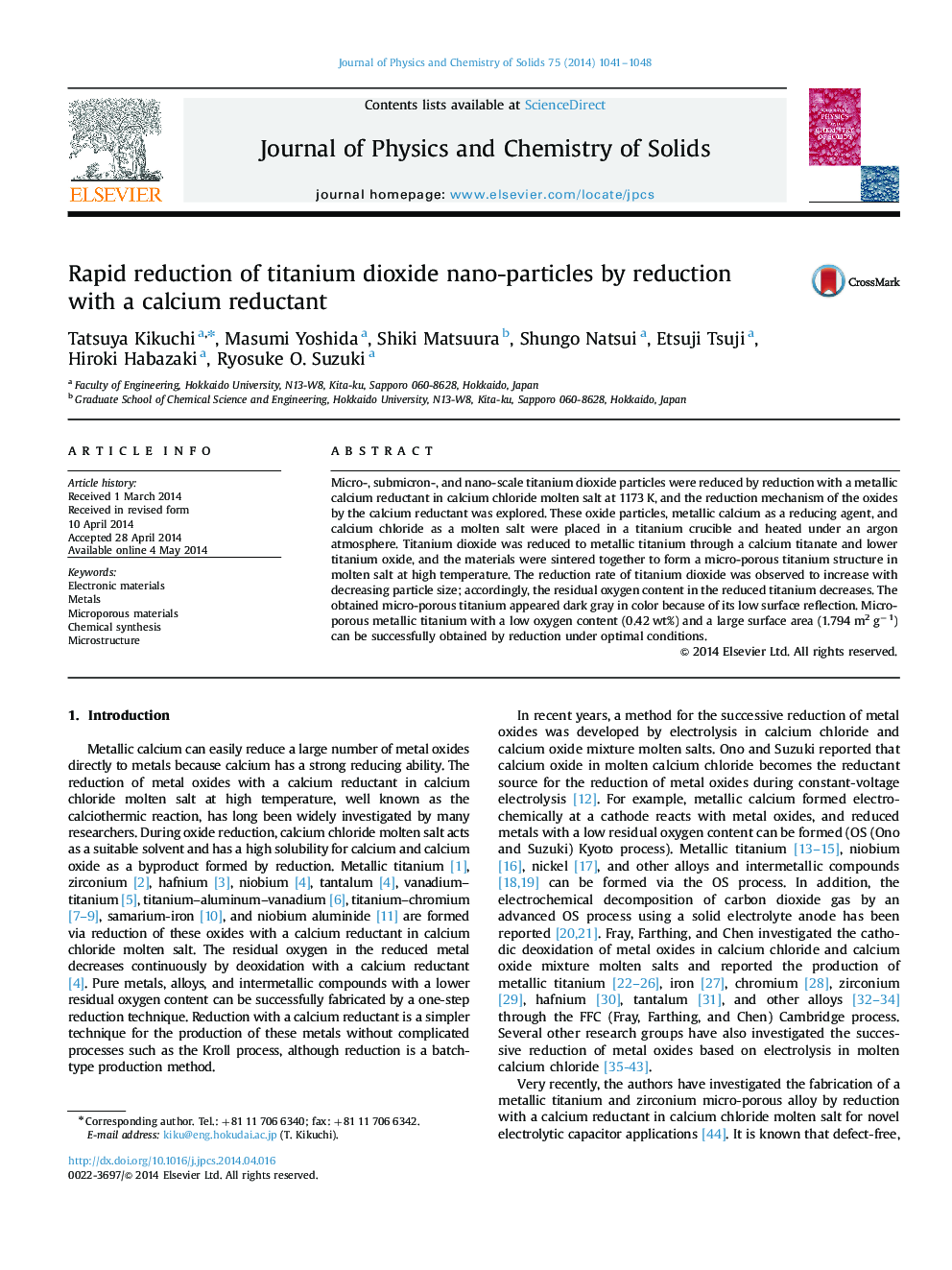| Article ID | Journal | Published Year | Pages | File Type |
|---|---|---|---|---|
| 1515693 | Journal of Physics and Chemistry of Solids | 2014 | 8 Pages |
•Titanium dioxide micro-, submicron-, and nano-particles were reduced by a calcium reductant.•The reduction behavior was studied by XRD, SEM, BET, and an oxygen analyzer.•Titanium dioxide nano-particles were more rapidly reduced than were micro- and submicron-particles.•A micro-porous metallic titanium structure was successfully obtained.•The titanium obtained from nano-particles has a low oxygen content.
Micro-, submicron-, and nano-scale titanium dioxide particles were reduced by reduction with a metallic calcium reductant in calcium chloride molten salt at 1173 K, and the reduction mechanism of the oxides by the calcium reductant was explored. These oxide particles, metallic calcium as a reducing agent, and calcium chloride as a molten salt were placed in a titanium crucible and heated under an argon atmosphere. Titanium dioxide was reduced to metallic titanium through a calcium titanate and lower titanium oxide, and the materials were sintered together to form a micro-porous titanium structure in molten salt at high temperature. The reduction rate of titanium dioxide was observed to increase with decreasing particle size; accordingly, the residual oxygen content in the reduced titanium decreases. The obtained micro-porous titanium appeared dark gray in color because of its low surface reflection. Micro-porous metallic titanium with a low oxygen content (0.42 wt%) and a large surface area (1.794 m2 g−1) can be successfully obtained by reduction under optimal conditions.
Graphical abstractFigure optionsDownload full-size imageDownload as PowerPoint slide
